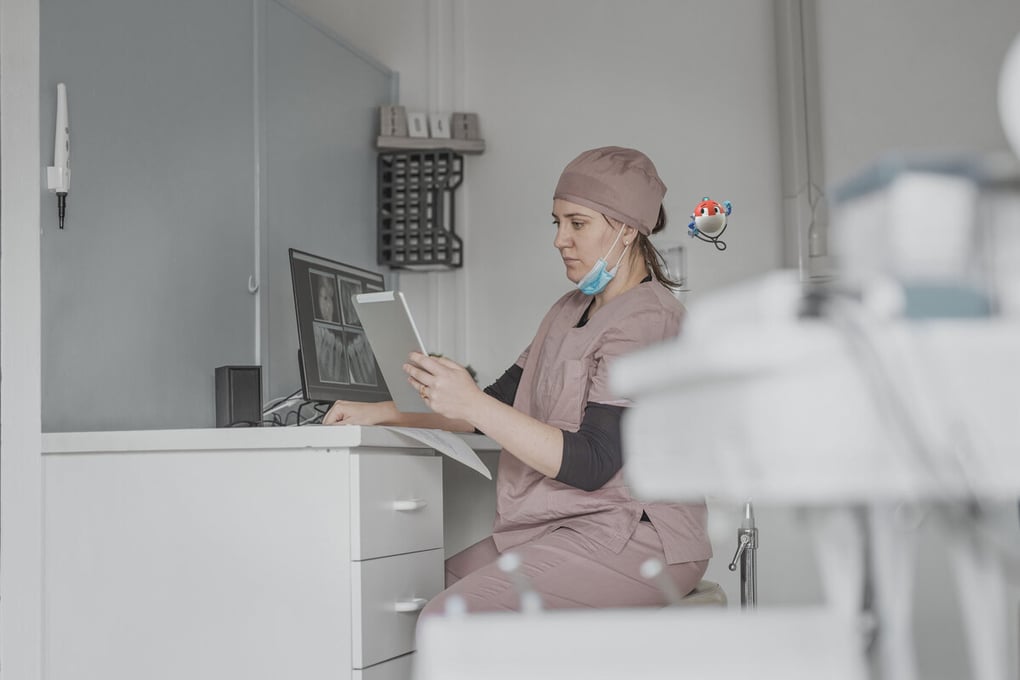
Client:Swedish Medical Products Agency
Industry:Healthcare
Region:Europe
Automation ‘alleviates pain’ for Swedish Medical Products Agency employees

Client Overview
The Swedish Medical Products Agency, known as Läkemedelsverket, is the national authority responsible for regulation and surveillance of the development, manufacturing and sale of pharmaceuticals and other medicinal products.
Partner

The pharmaceutical industry is one of the most heavily regulated on earth. And rightly so. After all, patients want to know the medicines they buy or are prescribed are safe, fairly priced, and effective. This puts a huge, yet vital burden on companies involved in drug discovery, manufacturing, and distribution.
Equally, there’s a colossal responsibility on regulators themselves to set standards for an incredibly complex and fast-changing industry. The sheer volume of work needed to keep on top of, and respond to the ever-changing landscape is huge—and often involves high levels of administration.
To meet this challenge, The Swedish Medical Products Agency began exploring robotic process automation (RPA) at the end of 2019. It all began when Lars Jakobsson, the regulator’s project manager for RPA, was tasked with introducing a system to manage the authorization of controlled narcotics during import and export. It had historically been a manual process, draining resources.
Jakobsson felt that RPA could help and set about building automation into the system as a proof of concept (PoC) to illustrate how the technology could relieve the workload of staff members. It was an enormous success, kick-starting automation across the organization.
“Employees managing the authorization process were satisfied,” Jakobsson says. But more importantly, “When the finance director found out what we had done, he wanted to start similar projects in other units,” he continues. “We then began to establish the technology on a wider level at the authority.”
Reducing workload and improving data quality
In doing so, Jakobsson set a plan for automation aimed at improving efficiency and the working environment while striving to enhance data quality.
Our basic principle for automation has been to ‘alleviate pain’ in the organization and ensure employees are in the driving seat. We wanted a ‘pull’ from teams, rather than a ‘push’ from us.
Lars Jakobsson • RPA Project Manager
By this, Jakobsson means he wanted staff to ask for automation, having understood the value it could offer, instead of it being foisted upon them.
The regulator has also been careful not to see automation as the solution to every problem. “Sometimes we have jointly concluded that a robot is not the way to go,” Jakobsson adds. “We’re always keen to find the right solution and not see RPA as a panacea.”
Automation accelerates
With successful automation in place and a plan for its roll-out, things quickly took off, spurred on by the pandemic.
During a normal year, the authority receives between 8,000 and 9,000 reports about side effects related to pharmaceuticals. During the peak of the COVID-19 outbreak, this surged to almost 100,000 – more than ten times the usual volume.
Without a corresponding increase in the team handling these reports, Jakobsson created an automation to help. It undertook about 100,000 duplicate checks and created 66,365 registered side-effect reports. Its work was invaluable, but also carefully managed to ensure safety.
The birth of ‘Allvert’
With this growth in automation, the agency was careful to manage its introduction sensitively, avoiding resistance, which can sometimes arise. People can worry about robots taking their jobs. Yet they don’t normally bat an eyelid when a new person joins their team. They’re often embraced as a welcome new pair of hands to help get the job done.
This led the agency to insist on giving all robots their own names. “It has been a way of assuring colleagues that these are new workmates who will support and relieve, rather than replace, human employees,” Jakobsson smiles.
We even had a birth announcement – or christening – when one of our first robots, Allvert, went live on October 2, 2020.
Lars Jakobsson • RPA Project Manager
“He has since contributed to large financial gains and helped us with drug safety among other things. In addition to Allvert, we have Civan, and many more, which have similar tasks in other business areas.”
This simple approach has certainly smoothed the introduction of the technology. One member of staff said, “Working to improve the business with the help of automation is among the most fun I've had.” Another made the point that, “Allvert is just there and does everything he has to do. You even forget that he exists.” This second point is an important one, illustrating that automation can slot seamlessly into a workplace, adding huge value without worry.
Automation queuing up
Following Jakobsson’s initial launch of automation at the agency, responsibility has been handed over to the administration team, led by administration manager, Mats Wurmbach. By no means does this signify a cooling in interest rates. Quite the opposite. Automation is now seen as a day-to-day, embedded way of running the organization.
We currently have approximately 20 new developments underway. Now it's about prioritizing the right things and creating good momentum. We will also look at new types of automation that combine robots with AI technology.
Mats Wurmbach • Administration Manager
And his door is always open for more automation ideas, with a fast-decision-making process that ensures help is always on hand for employees needing RPA support.
Having said that, the approach remains careful and considered. Automations that offer the most benefit for the organization are prioritized, and only in cases where RPA is judged to be the right solution when compared to other technologies and resource availability.
Now that robots are embedded, Wurmbach only gets involved at the start of a project, then backs out and lets the team in question, together with developers, take over. He does, however, still make time for celebrations.
“I'm going out to the coffee room right away to have a celebratory ice cream to welcome Alma, one of the latest robots to start her service. The fact that the business is so committed shows a good anchoring,” he says as he prepares for a treat with colleagues.
What started with a support system for drug management has developed into a burgeoning automation program with 20 ideas in a queue ready for development. And it’s making a significant impact. RPA has saved millions of kroner (hundreds of thousands of euros), streamlined everything from diary keeping to side-effect processes, and created a great commitment among employees who welcome new robot colleagues….Often with ice cream!
During an evaluation in May 2022, our digital employees had performed work equivalent to several million kronor, with a return on investment of seven to eight times. It’s an incredible time-saver for the business to automatically get help with filling in fields that otherwise needed to be handled manually by an administrator.
Lars Jakobsson • RPA Project Manager
Which is vital when it comes to the work of an organization such as The Swedish Medical Products Agency. The health, safety, and wellbeing of its citizens rely on its work. And, in turn, staff rely on robots to get the job done.
Related case studies
Ready for your own case study?
Speak to our team of knowledgeable experts and learn how you can benefit from agentic automation.






